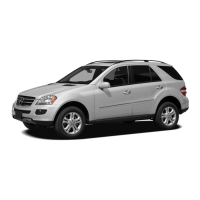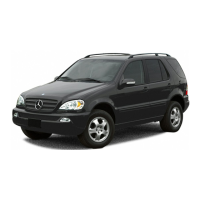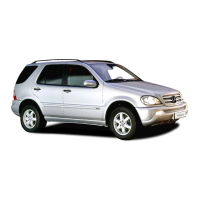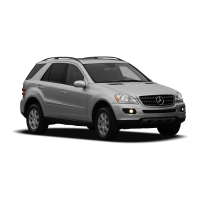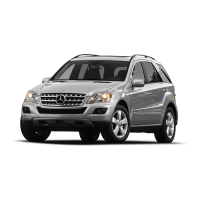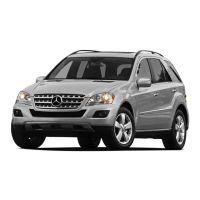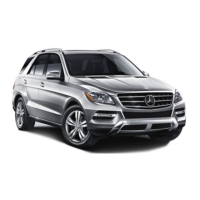Therefore, you should only correcttire
pressures when the tires are cold.
The tires are cold:
R
if the vehicle has been parked without
directsunlight on the tires for at least three
hours and
R
if the vehicle has notbeen driven further
than 1 mile (1.6 km)
The tire temperature changes depending on
the outside temperature, the vehicle speed
and the tire load. If the tire temperature
changes by 18 ‡ (10 †), the tire pressure
changes by approximately 10 kPa (0.1 bar/
1.5 psi). Take this into accountwhen
checking the pressure of warm tires. Only
correct the tire pressure if it is too low for the
current operating conditions. If you check the
tire pressure when the tires are warm, the
resulting value will be higher than if the tires
were cold. This is normal. Do not reduce the
tire pressure to the value specified for cold
tires. The tire pressure would otherwise be
too low.
Observe the recommended tire pressures for
cold tires:
R
on the Tire and Loading Information placard
on the B-pillar on the driver's side
R
in the tire pressure table on the inside of
the fuel filler flap
R
printed in yellow on the rim of the
emergency/collapsible spare wheel
(depending on vehicle equipment)
Underinflated or overinflated tires
Underinflation
G
WARNING
Tires with pressure that is too low can
overheat and burst as a consequence. In
addition, they also suffer from excessive and/
or irregular wear, which can severely impair
the braking properties and the driving
characteristics. There is a risk of an accident.
Avoid tire pressures that are too low in all the
tires, including the spare wheel.
Underinflated tires may:
R
overheat, leading to tire defects
R
have an adverse effect on handling
characteristics
R
wear quickly and unevenly
R
have an adverse effect on fuel consumption
Overinflation
G
WARNING
Tires with excessively high pressure can burst
because they are damaged more easily by
road debris, potholes etc. In addition, they
also suffer from irregular wear, which can
severely impair the braking properties and the
driving characteristics. There is a risk of an
accident.
Avoid tire pressures that are too high in all the
tires, including the spare wheel.
Overinflated tires may:
R
increase the braking distance
R
have an adverse effect on handling
characteristics
R
wear quickly and unevenly
R
have an adverse effect on ride comfort
R
be more susceptible to damage
Maximum tire pressures
:
Example: maximum permissible tire
pressure
404
Tire pressure
Wheels and tires
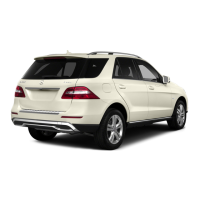
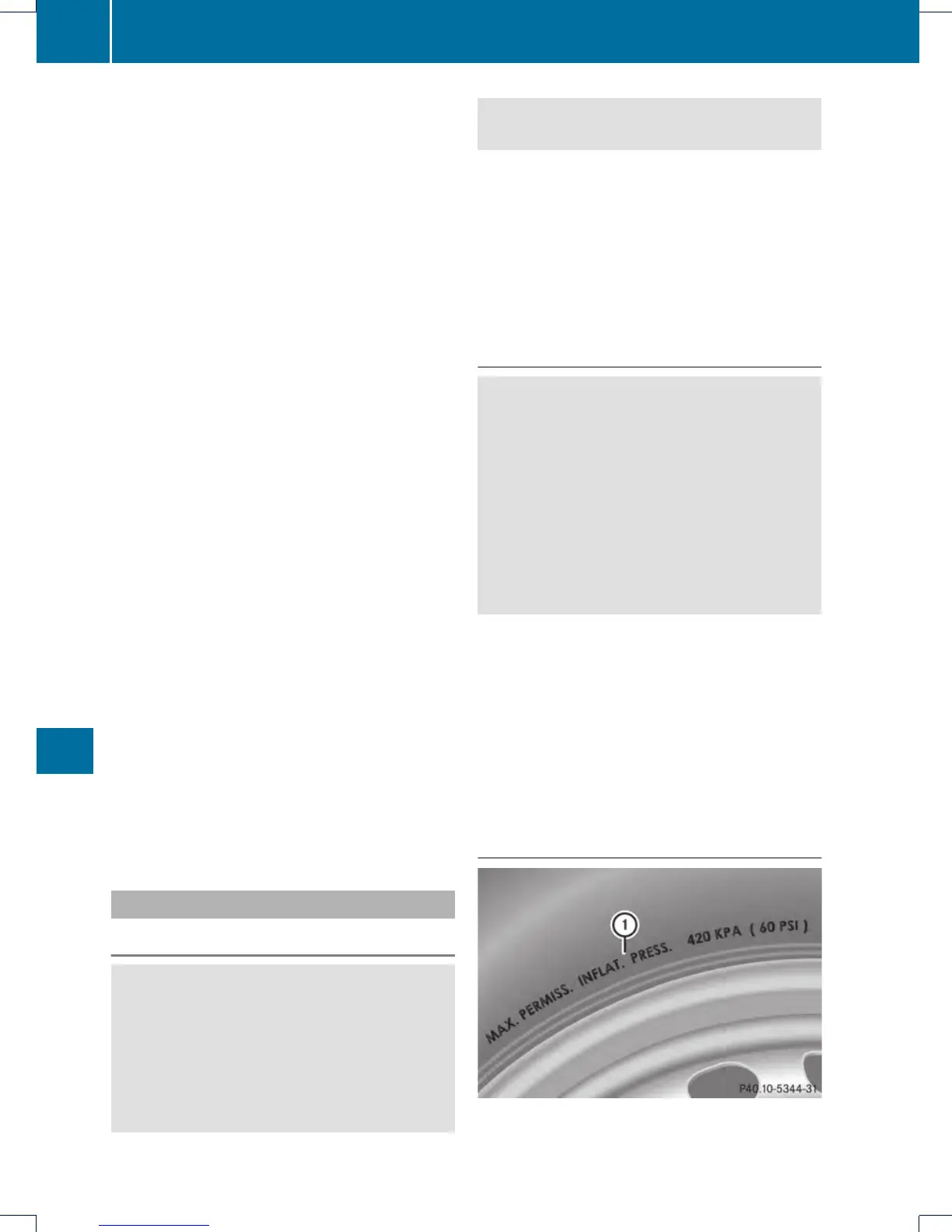